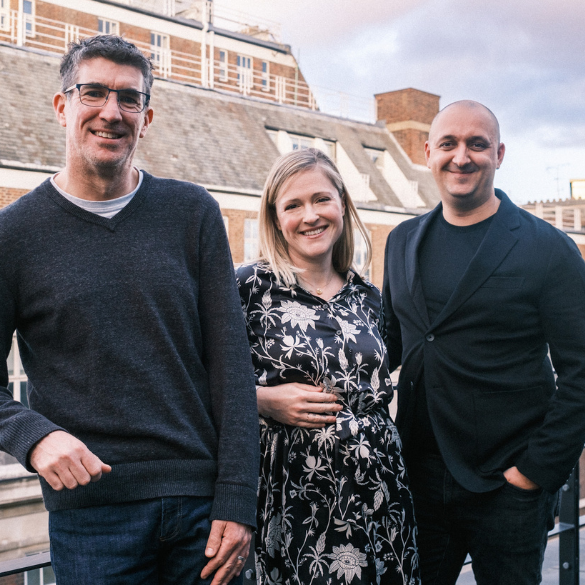Customers already use voice. It’s time to do something about it.
In the Voice Consumer Index 2022, we uncovered the attitudes toward voice technology, how consumers are using it, and how they want to interact with voice technology in the future.
Brands that harness the power of voice throughout the customer journey can deliver a richer and more meaningful customer experience. Here are top 5 insights from the research that will have a major impact on brands going into 2023 and beyond.
1. 38% OF AMERICANS ARE USING VOICE ASSISTANTS DAILY
Thanks in large part to Siri, Alexa, and Google Assistant, awareness of voice technology is extremely high. A remarkable 96% of Americans said they were already aware of the technology.
Even more exciting is the number of people we found to be active users of voice. In the US and UK, more than 60% of the participants said that they were using a voice assistant. We also found that 38% of Americans used a voice assistant daily, and 28% of those used it multiple times a day.
This is great news for marketers as it shows there is an even greater adoption and usage of voice than was previously expected.
2. VOICE ASSISTANT USAGE IS SPREAD ACROSS THE PLATFORMS
When we think of early adopters of technology, we often think of younger, hip, tech-forward age groups. That simply isn’t the case with voice. Sure, you have people from 18-24 years old using this technology, but from a macro view, you see a wide spread across generations, from 18 to 65-plus years. This means there’s an opportunity for all brands, not just those targeting millennials or the younger set.
The most used voice assistant platforms change based on age and country. We see a lot of use of Siri in the 18-24-year-old age groups, while others use Google Assistant or Amazon Alexa.
While third-party developers can’t create experiences that tap deeply into Siri at this time, the research suggests a consumer desire for Voice optimised mobile apps on iOS and Android, and also product websites.
3. VOICE ACTIVITIES CLOSELY ALIGN WITH THE MARKETING FUNNEL
One of the main reasons we conducted this research was to confirm (or deny) the theory that consumers are using voice technology in ways that align with traditional marketing funnels (Awareness > Consideration > Purchase > Retention). We also wanted to see if consumers were using voice to get information and complete tasks that are similar to what is seen in other channels.
Much to our delight, we did see a clear pattern of behaviour that closely aligns with what you’d expect from a marketing funnel.
91% of all voice assistant users have asked their assistant a question. In many ways, voice search is more accessible and convenient than typing, and we see this behaviour happening on mobile, smart speakers and even desktop computers.
We found that consumers are comfortable asking general awareness questions and even digging deeper, with more specific questions about products, brands and even local businesses.
US consumers are interested in voice search across all the industries we explored in the Voice Consumer Index, including Entertainment (62%), Retail (54%), Consumer Packaged Goods (49%), Healthcare (51%), Restaurant and Food Delivery (52%), Finance (42%), and Travel (43%).
It’s clear that voice has begun to disrupt the way consumers search for information and even buy products and services. This is interesting because it’s happening without a lot of marketing and content support from brands.
4. VOICE SEARCH IS A CRITICAL PIECE OF THE MARKETING ECOSYSTEM
To better understand how voice fits into the marketing ecosystem (and where the handoffs are), we asked consumers where they were likely to go after they had done a voice search. The results were eye-opening to say the least.
82% of US voice assistant users said they would visit a product or brand website after an initial voice search. This is followed by going to branded mobile apps (75%) and watching product reviews on YouTube (70%).
62% of people said they were interested in continuing to use voice. This shows they are comfortable with voice and want to do more with it. It’s also evidence that a large portion of voice consumers are further along in integrating voice into their daily routine than previously thought.
While consumers want to do more with their voice, there aren’t many branded voice experiences for them to engage with… yet. This gap is your chance to provide the relevant information your audience needs to move forward in the path to purchase.
5. USERS NEED MORE SUPPORT FROM BRANDS AND MARKETERS
Voice consumers are actively looking to do more with their assistants and crave information. It’s time to start providing it to them before your competitors do.
A majority of consumers said they were using “trial and error” to see what they can do with their voice assistant. This is a positive sign for marketers because it shows an appetite and a desire for more. However, only 38% of participants indicated they learned to use their assistant from branded advertising or promotions. Part of this is because there haven’t been that many marketing campaigns that have included voice as part of the marketing mix or within the messaging.
This is an opportunity for marketers to use paid, owned, and earned media to demonstrate their leadership position by providing the right message to the right person at the right time.
TOP VOICE USE CASES
To add to our findings, we conducted a top task exercise to uncover which features and use cases matter most to voice assistant users. We started with a list of 50 total items divided between the awareness, consideration, purchase, and retention phases, and asked them to pick the most meaningful ones to them.
We asked them to select the tasks they’d be interested in doing with their voice. The results provided a total of between 75-100 use cases that are relevant to the seven industries we explored.
To get the findings and delve deeper into what consumers need from voice, download the Voice Consumer Index 2022.
Originally published by Pragmatic Digital.





